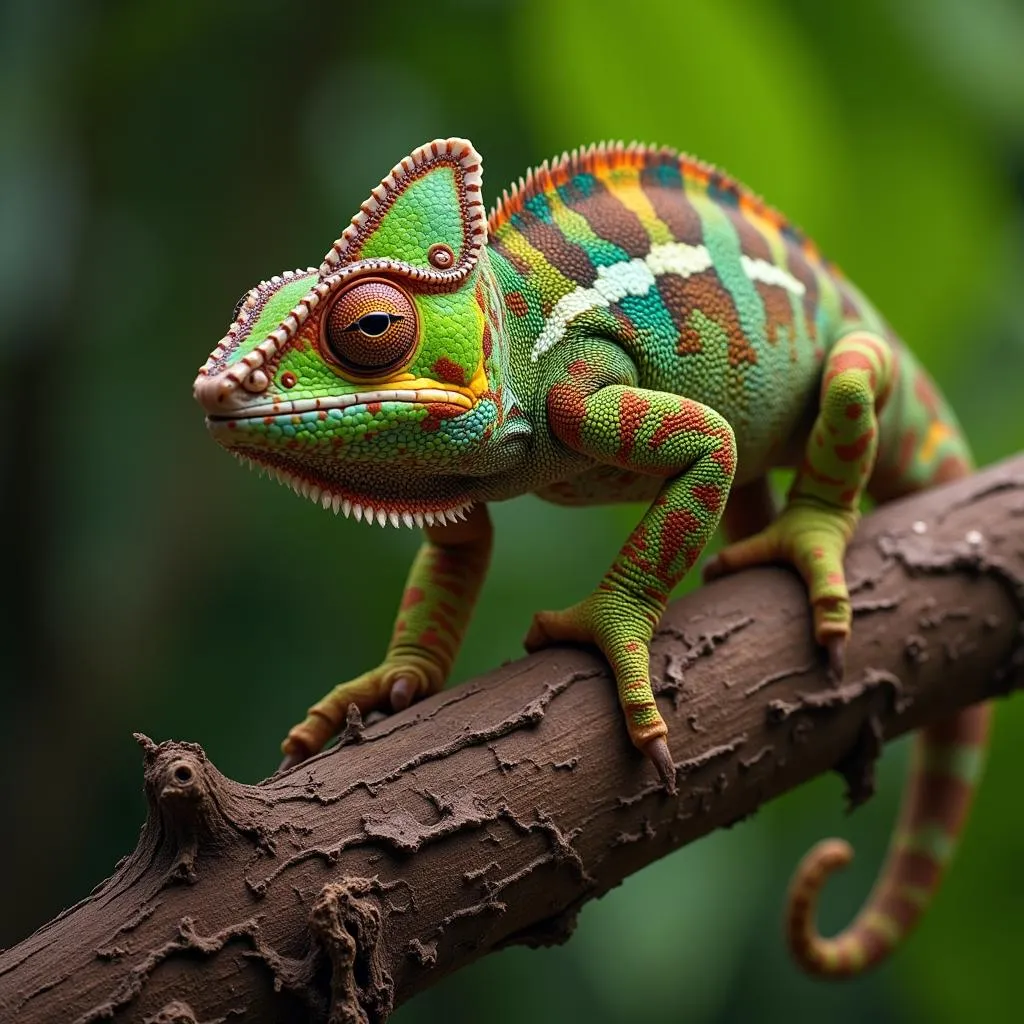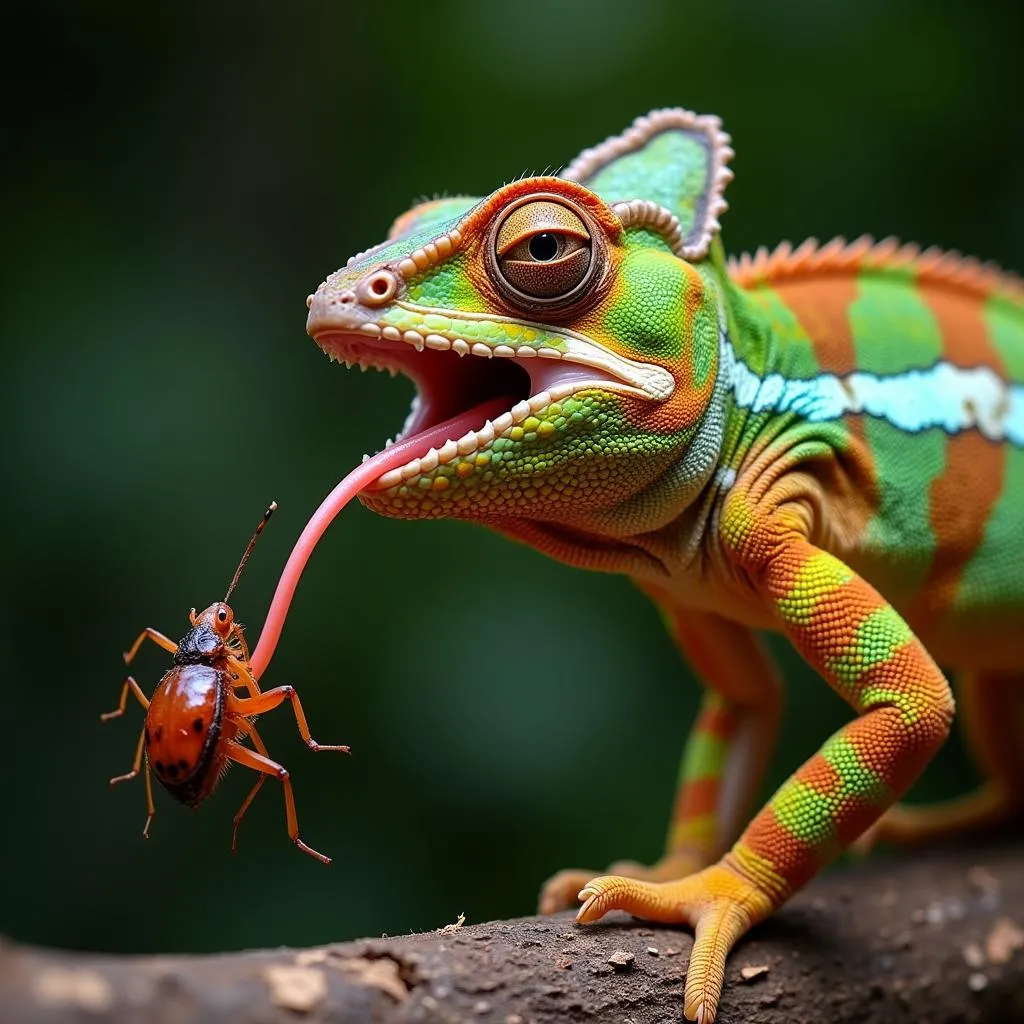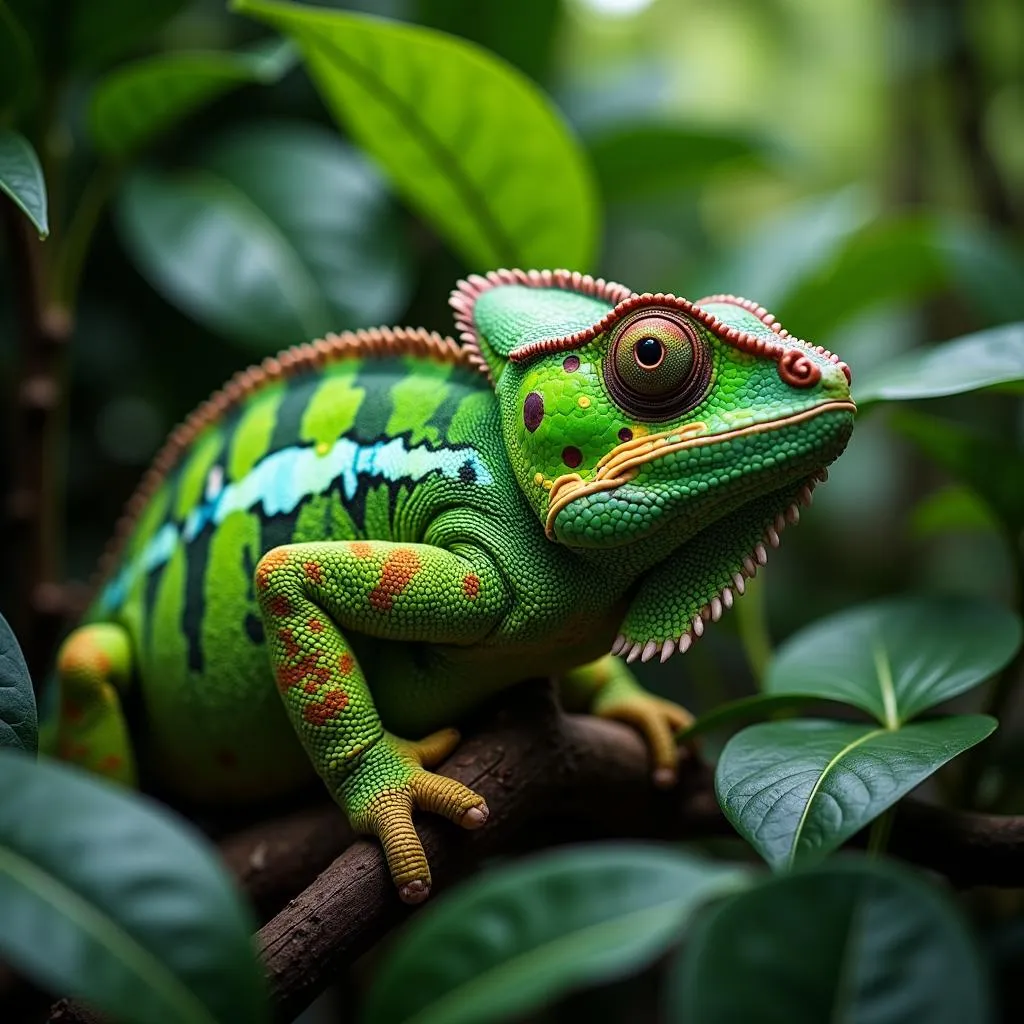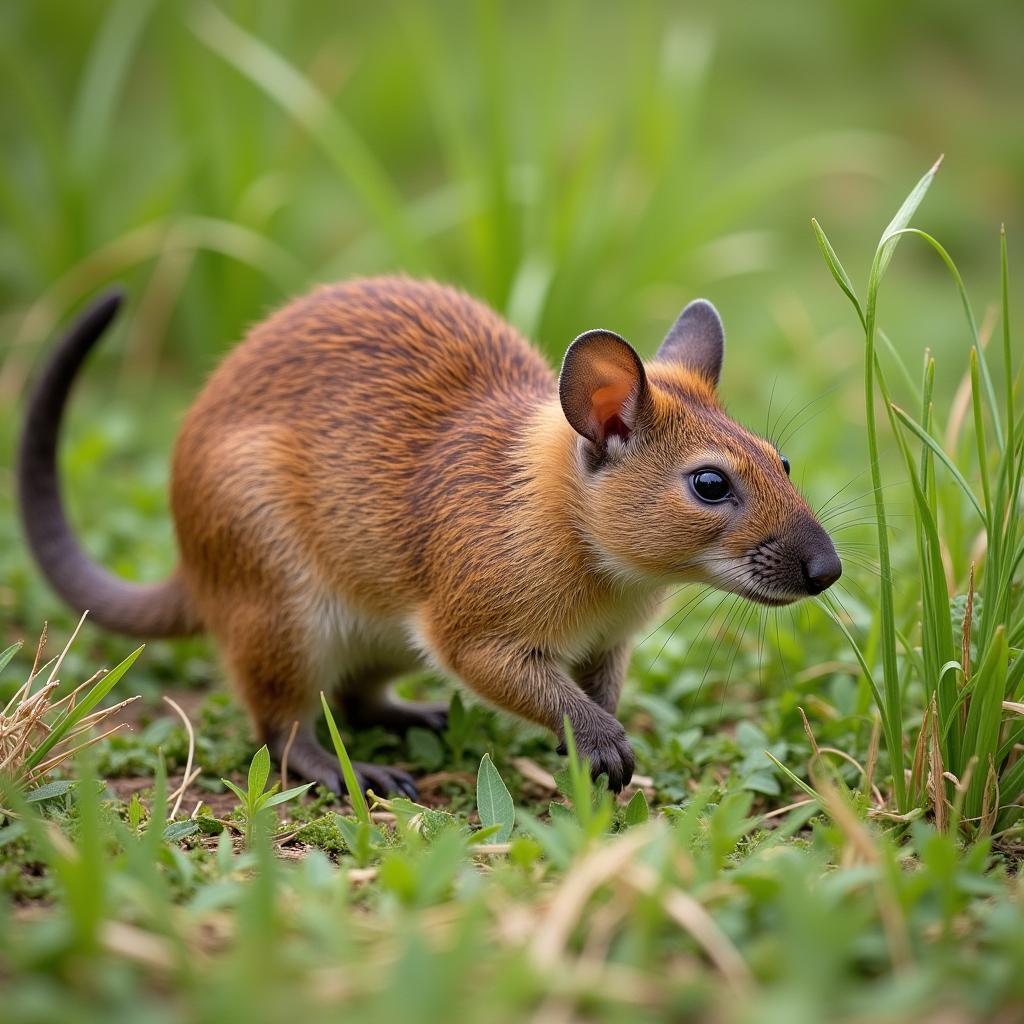The Captivating World of the African Chameleon
The African Chameleon, a master of disguise and a creature of fascinating paradoxes, holds a unique place in the heart of the African continent. Far from being just another reptile, these enigmatic creatures are woven into the fabric of African folklore, symbolizing patience, adaptability, and a connection to the spiritual world. Their vibrant colors, slow, deliberate movements, and almost mythical ability to change color have captivated imaginations for centuries.
 African Chameleon Camouflaged on a Branch
African Chameleon Camouflaged on a Branch
Unveiling the Mysteries: More Than Just a Color Change
While their color-changing prowess is legendary, it’s often misunderstood. Chameleons don’t simply shift hues to blend with their surroundings. Their color changes are primarily a complex form of communication, expressing emotions, signaling intent, and even playing a role in regulating body temperature.
Contrary to popular belief, chameleons cannot mimic any color. Their palette is limited by the pigments present in their skin cells, resulting in a breathtaking array of greens, browns, yellows, and even blues, often with intricate patterns and markings.
A Closer Look at the Chameleon’s Arsenal
Beyond their captivating color displays, African chameleons possess a suite of remarkable adaptations that allow them to thrive in their diverse habitats. Their independently moving eyes, each with a 360-degree field of vision, grant them unparalleled hunting prowess.
 African Chameleon Catching Insect with Tongue
African Chameleon Catching Insect with Tongue
Their prehensile tails, acting as a fifth limb, provide stability as they navigate the arboreal world. And then there’s the tongue – a lightning-fast, elongated marvel capable of launching up to twice the chameleon’s body length to snatch unsuspecting prey with pinpoint accuracy.
Diversity in the Wild: A Kaleidoscope of Species
The African continent boasts an astonishing diversity of chameleon species, each with unique adaptations and characteristics. From the diminutive Brookesia micra, measuring a mere inch in length, to the impressive Parson’s chameleon, reaching sizes exceeding two feet, the world of African chameleons is as varied as the continent itself.
Some, like the Jackson’s chameleon, are adorned with horn-like projections, while others, such as the Flap-necked chameleon, boast impressive neck frills that they can flare to intimidate rivals or deter predators.
Conservation Concerns: Protecting a Fragile Wonder
Sadly, the future of many African chameleon species is uncertain. Habitat loss due to deforestation, the illegal pet trade, and climate change pose significant threats to these fascinating creatures. Conservation efforts are underway to protect these vulnerable reptiles, but more needs to be done to ensure their survival for generations to come.
 African Chameleon in Vibrant Green Foliage
African Chameleon in Vibrant Green Foliage
Conclusion: A Testament to Nature’s Ingenuity
The African chameleon stands as a testament to the ingenuity and beauty of the natural world. These remarkable creatures, with their captivating colors, unique adaptations, and vital role in their ecosystems, deserve our admiration and protection. As we learn more about these fascinating reptiles, we gain a deeper appreciation for the intricate web of life that makes the African continent so extraordinary.
FAQs
Q: Why do African chameleons change color?
A: While camouflage plays a role, color change is primarily a form of communication, expressing emotions, signaling intent, and regulating body temperature.
Q: What do African chameleons eat?
A: They are primarily insectivores, using their lightning-fast tongues to capture insects.
Q: How long do African chameleons live?
A: Lifespans vary depending on the species, but most live between 2-5 years in the wild.
Q: Are African chameleons dangerous to humans?
A: No, they are not venomous and rarely bite. However, handling should be minimized to reduce stress.
Q: How can I help conserve African chameleons?
A: Support organizations working to protect their habitats, never purchase wild-caught chameleons, and spread awareness about their plight.
For further insights into the fascinating world of African wildlife, explore these related articles:
- African forest signals
- Discover the vibrant world of the African blue tailed skink.
- Meet the talented African bongo player and experience the rhythm of the continent.
If you need support, please contact us at: Phone Number: +255768904061, Email: kaka.mag@gmail.com Or visit: Mbarali DC Mawindi, Kangaga, Tanzania. We have a 24/7 customer support team.


